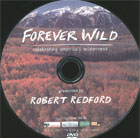
Forever Wild: Celebrating America’s Wilderness 2009
Distributed by The Video Project, PO Box 411376, San Francisco, CA 94141-1376; 800-475-2638
Produced by First Light Films
Directed by Chelsea Congdon
DVD, color, 57 min.
Jr. High - Adult
Environmental Studies
Date Entered: 02/05/2010
Reviewed by Cliff Glaviano, Coordinator of Cataloging, Bowling Green State University Libraries, Bowling Green, OHThe Wilderness Act of 1964 established the National Wilderness Preservation System (NWPS) as a means of preserving wilderness areas for future generations. Initially, the NWPS included 34 areas and protected 9.1 million acres in the U.S. National Parks and National Forests. Currently, more than 704 wilderness areas are included in the NWPS, preserving more than 107.5 million acres, or about 5% of the entire United States. Many of the additional areas were added through legislative action promoted by ordinary American citizens. Forever Wild tells the story of how U.S. wilderness advocates successfully championed local wilderness areas in order to have them added to the NWPS.
Noted environmental activist Robert Redford hosts the program, providing background and narration for the extraordinary, high-definition photography of James Brundige, who also edited the video. Terry Tempest Williams reads from her contemplative writings on wilderness, while Doug Scott, Campaign for America’s Wilderness, provides his insights on wilderness and environmental activism. In each instance of successful activism in the video, in Colorado, in California, and in New Hampshire, wilderness lovers spent years of their lives and devoted much personal income to explore the creation of organizations and coalitions to preserve local threatened wilderness habitats.
This is grassroots activism at its best, a template for change based in personal commitment and dedication to the hard work it takes to share, and eventually to achieve a vision. Although the film depicts only successful efforts, those interviewed adequately describe their efforts and the corporate, legislative and local economic obstacles that they had to overcome to achieve their goals. The commitment and personal sacrifice shown in this video is nearly beyond comprehension. One can only imagine the bitter disappointment for those who had similar worthy aims that were thwarted along the way. Fortunately, Forever Wild is accompanied by in-depth resources and strategies for organizing for environmental activism and succeeding with local and federal legislators. A glance at the resources will further underline the difficulties involved in preserving wilderness for future generations. Only the strongest, the most committed and most patient of wilderness visionaries are likely to succeed. This video is highly recommended for its beauty, its supporting resources, and the inspiration that all will find in the success stories it showcases.